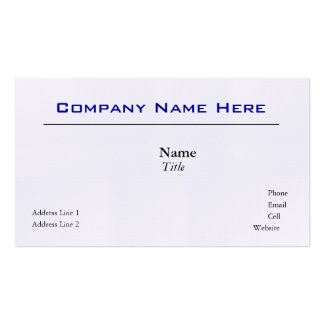No matter how strong your content is, a large national brand will always have higher traffic that causes them to outrank you – right? Matt Cutts, Google’s head of search spam, recently exposed the truth about whether site size impacts search ranking.
Matt Cutts clearly disagrees with the notion that larger national brands will always have higher traffic and search rankings. Smaller sites might actually have more opportunities and capabilities due to their size, such as producing fresh content more quickly.
While it’s easy to feel like outranking your larger competitors is a hopeless investment, consider your area of business. If you can find real ways to stand out from your competition by focusing your efforts on a particular niche, Cutts and the rest of Google argue that your site can easily experience long-term benefits.
Debunking the Myth
The myth that larger web sites rank better in Google is apparent everywhere. In September of 2013, 400 people responded to a survey that asked if they believed the size of a site impacts Google rankings. 57% believed that larger sites rank better, while only 9% of respondents believed smaller sites could – and the remaining 34% believed that size doesn’t impact the rankings at all.
While many of us may be daunted by larger sites – and may be surprised by Cutts’ response – it’s clear that the quality of the site and what’s on the web pages will make a difference in search rankings.
Because Google ranks web pages instead of websites, the search engine is always looking to match the best, most relevant web page to a user’s search query. So it shouldn’t matter if your site is big or small – if you focus on quality, your diligence and creativity will pay off in the long run.
Become a Larger Site
Even though your site might be small compared to nationally-recognized competitors, you can end up becoming a larger site if you work harder and produce superior content. From Cutts’ angle, he argues that while your site may be smaller now, it can grow and transform if it gives users a better experience than your larger competitors.
You’ll be delivering more value in the long run, and Google rewards sites for it. Cutts uses Instagram as an example of a site that started out small but provided something of extreme value to its users. Because of the site’s focus on value, they were able to grow into a large, well-known platform.
However, make sure you consider your site and your staff. If you only have one person running the site, you may have to start small. This isn’t a negative, as it allows you to focus on a specific topic or niche. Then, if you can become the leading expert in that area, you’ll be able to expand into other areas with time. As you become more authoritative and reputable in different areas, you’ll help your site get larger and larger.
Focus on User Experience and Value
High quality content will be one of the ways you can give users what they want and deliver user experience and value – the two components Google considers heavily when ranking sites, according to Cutts.
Smaller sites may have the time and capabilities to produce more fresh content than larger brands. In Cutts’ latest video, he shares specific strategies that smaller sites should implement if they’re looking to outrank their larger competitors:
- Be agile – remaining attentive to what your users want and how the Internet is changing is important to the success of your site. Your users’ needs will change over time, just like the Internet. Be agile and flexible to ensure your site is always ahead of the next change.
- Be dynamic – if you’re energetic about your site and your goals, the experience you provide users will be a vibrant one. If you can create new ideas while giving users something unique and brimming with value, your rankings and the success of your site will increase immensely.
- Respond quickly – by responding to users’ needs and inquiries quickly, you’ll position yourself as an industry leader who is laser focused on your customers’ happiness.
- Target realistic areas – instead of trying to rank for “home repair,” target keywords that are longer and more specific to a certain niche or local area. Focus your efforts on becoming a leader in the long tail, and then move into targeting broader topics down the road.
Be Better in the Long Run
With Cutts’ latest video and explanation, it should be evident that outranking larger sites is possible with diligence and smart strategies. As Cutts says, “the smaller guys absolutely can [outperform] the larger guys as long as they do a really good job at it.”
By focusing on a specific area, being creative with your ideas, and delivering user experience and value, you can transform your site into a larger presence. Be optimistic about your capabilities, and figure out what you can do that the bigger sites can’t.
Don’t give up trying to produce stellar content. If we have learned anything from Matt Cutts and Google’s recent updates, superior content is what will help your site rank better in the long run.
Adrienne Erin writes twice weekly for SiteProNews about online marketing strategies that help businesses like Memolink succeed. Follow @adrienneerin on Twitter to see more of her work or get in touch.







Great article. I cover every point of my doubts. I loved this post.
ReplyDeleteThank you so much for this article.
Regard,
Digital Marketing Agency
Social Media Marketing Agency
SEO Agency
PPC Agency